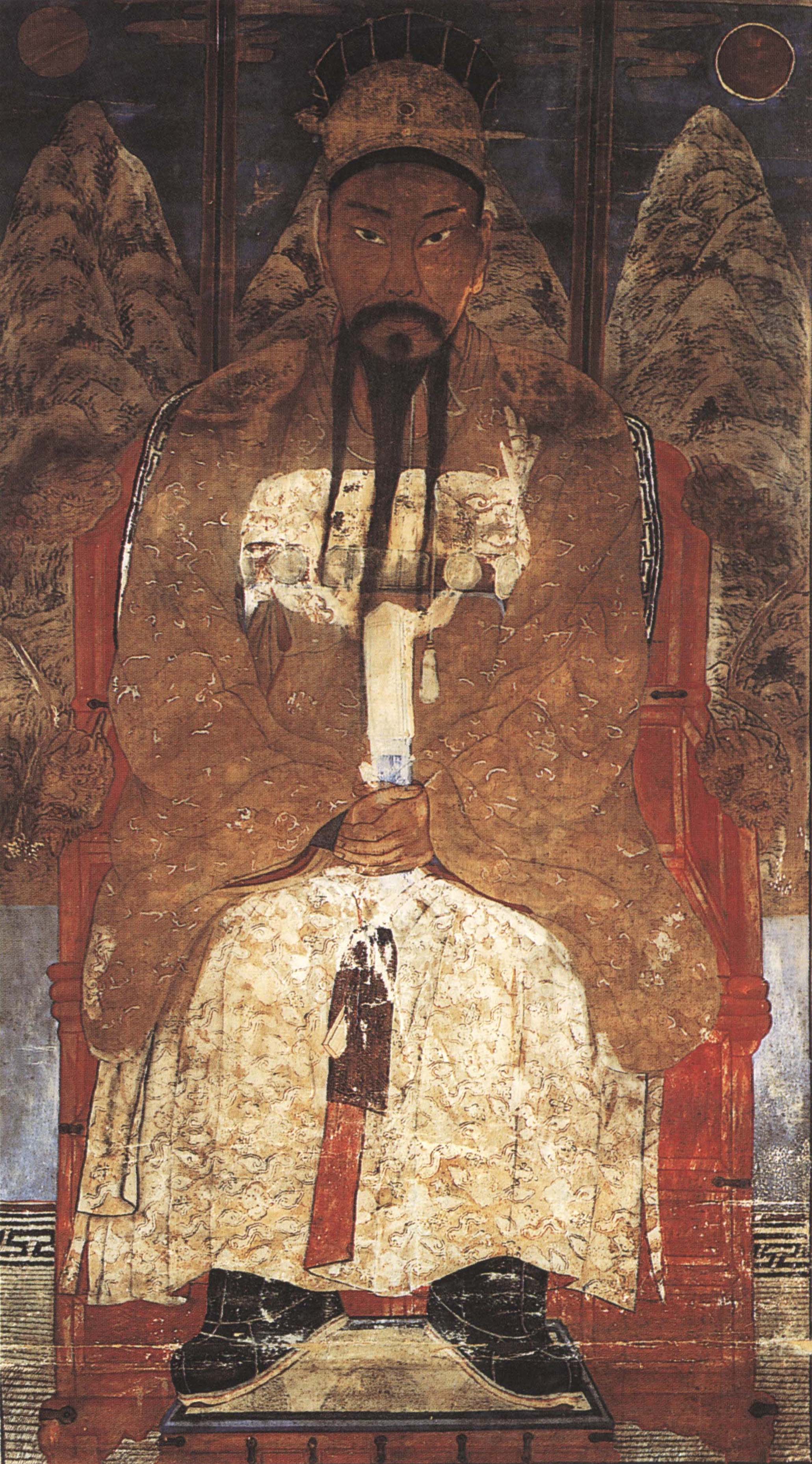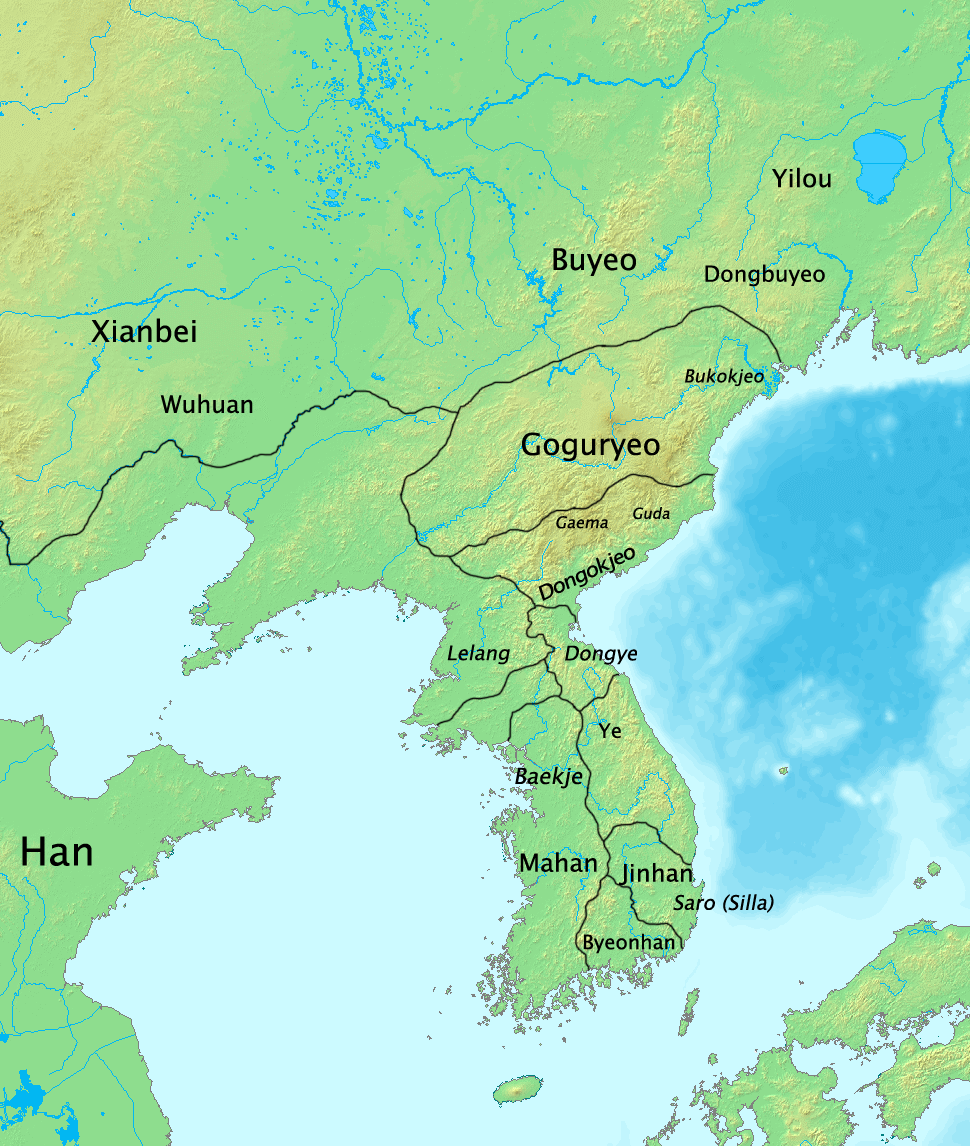|
Korean Mythology
Korean mythology () is the group of myths told by historical and modern Koreans. There are two types: the written, literary mythology in traditional histories, mostly about the founding monarchs of List of monarchs of Korea, various historical kingdoms, and the much larger and more diverse Oral literature, oral mythology, mostly narratives sung by mudang, shamans or priestesses (mansin) in gut (ritual), rituals invoking the gods and which are still considered sacred today. The historicized state-foundation myths representing the bulk of the literary mythology are preserved in Classical Chinese-language works such as ''Samguk sagi'' and ''Samguk yusa''. One state's foundation myth, that of the first Korean kingdom of Gojoseon by legendary king Dangun, has become the founding myth of the whole Korean nation. State-foundation myths are further divided into northern, such as that of the kingdom of Goguryeo and its founder Dongmyeong of Goguryeo, Jumong, where the founder is the son o ... [...More Info...] [...Related Items...] OR: [Wikipedia] [Google] [Baidu] |
Myths
Myth is a genre of folklore consisting primarily of narratives that play a fundamental role in a society. For scholars, this is very different from the vernacular usage of the term "myth" that refers to a belief that is not true. Instead, the veracity of a myth is not a defining criterion. Myths are often endorsed by religious (when they are closely linked to religion or spirituality) and secular authorities. Many societies group their myths, legends, and history together, considering myths and legends to be factual accounts of their remote past. In particular, creation myths take place in a primordial age when the world had not achieved its later form. Origin myths explain how a society's customs, institutions, and taboos were established and sanctified. National myths are narratives about a nation's past that symbolize the nation's values. There is a complex relationship between recital of myths and the enactment of rituals. Etymology The word "myth" comes from Ancie ... [...More Info...] [...Related Items...] OR: [Wikipedia] [Google] [Baidu] |
Bongwan
Korean clans are groups of Korean people that share the same paternal ancestor. They are indicated by the combination of a ''bongwan'' () and a family name. Korean clans distinguish clans that happen to share the same family name. The ''bongwan'' identifies descent groups by geographic place of origin. For example, the Gyeongju Kim and the Gimhae Kim are considered different clans, even though they happen to share the same family name '' Kim''. In this case, Gyeongju and Gimhae are the respective ''bongwan'' of these clans. However, a clan name is not treated as a part of a Korean person's name. The ''bongwan'' and the family name are passed on from a father to his children, thus ensuring that person in the same paternal lineage sharing the same combination of the ''bongwan'' and the family name. A ''bongwan'' does not change by marriage or adoption. Different family names sharing the same ''bongwan'' sometimes trace their origin to a common paternal ancestor, e.g. the ' cla ... [...More Info...] [...Related Items...] OR: [Wikipedia] [Google] [Baidu] |
Mudang
''Mu'' () is the Korean term for a shaman in Korean shamanism. Korean shamans hold rituals called '' gut'' for the welfare of the individuals and society. In modern Korea different terms are used to define shamans, including ''mudang'' (mostly for females), ''baksu'' (only for males), ''tangol'' (for hereditary shamans), and ''musogin'' ("people who do shamanism", used in the context of organised shamanism). Etymology The Korean word 무 ''mu'' is written with the chinese character 巫, which defines shamans of either sex. Korean shamanic terminology has, however, at least a partial origin in Siberian languages. Already in records from the Yi dynasty, ''mudang'' has a prevalent usage. ''Mudang'' itself is explained in relation to Chinese characters, as originally referring to the "hall", 堂 ''tang'', of a shaman. A different etymology, however, explains ''mudang'' as stemming directly from the Siberian term for female shamans, ''utagan'' or ''utakan''. ''Mudang'' is used most ... [...More Info...] [...Related Items...] OR: [Wikipedia] [Google] [Baidu] |
Princess Bari
Korean mythology () is the group of myths told by historical and modern Koreans. There are two types: the written, literary mythology in traditional histories, mostly about the founding monarchs of various historical kingdoms, and the much larger and more diverse oral mythology, mostly narratives sung by shamans or priestesses (mansin) in rituals invoking the gods and which are still considered sacred today. The historicized state-foundation myths representing the bulk of the literary mythology are preserved in Classical Chinese-language works such as ''Samguk sagi'' and ''Samguk yusa''. One state's foundation myth, that of the first Korean kingdom of Gojoseon by legendary king Dangun, has become the founding myth of the whole Korean nation. State-foundation myths are further divided into northern, such as that of the kingdom of Goguryeo and its founder Jumong, where the founder is the son of a celestial male figure and an earthly female figure, and southern, such as that of th ... [...More Info...] [...Related Items...] OR: [Wikipedia] [Google] [Baidu] |
Buddhist Priest
A ''bhikkhu'' (, ) is an ordained male in Buddhist monasticism. Male, and female monastics (''bhikkhunī''), are members of the Sangha (Buddhist community). The lives of all Buddhist monastics are governed by a set of rules called the prātimokṣa or pātimokkha. Their lifestyles are shaped to support their spiritual practice: to live a simple and meditative life and attain nirvana. A person under the age of 20 cannot be ordained as a bhikkhu or bhikkhuni but can be ordained as a śrāmaṇera or śrāmaṇērī. Definition ''Bhikkhu'' literally means "beggar" or "one who lives by alms". The historical Buddha, Prince Siddhartha, having abandoned a life of pleasure and status, lived as an alms mendicant as part of his śramaṇa lifestyle. Those of his more serious students who renounced their lives as householders and came to study full-time under his supervision also adopted this lifestyle. These full-time student members of the sangha became the community of ordained mon ... [...More Info...] [...Related Items...] OR: [Wikipedia] [Google] [Baidu] |
Jeseok Bon-puri
Korean mythology () is the group of myths told by historical and modern Koreans. There are two types: the written, literary mythology in traditional histories, mostly about the founding monarchs of various historical kingdoms, and the much larger and more diverse oral mythology, mostly narratives sung by shamans or priestesses (mansin) in rituals invoking the gods and which are still considered sacred today. The historicized state-foundation myths representing the bulk of the literary mythology are preserved in Classical Chinese-language works such as ''Samguk sagi'' and ''Samguk yusa''. One state's foundation myth, that of the first Korean kingdom of Gojoseon by legendary king Dangun, has become the founding myth of the whole Korean nation. State-foundation myths are further divided into northern, such as that of the kingdom of Goguryeo and its founder Jumong, where the founder is the son of a celestial male figure and an earthly female figure, and southern, such as that of th ... [...More Info...] [...Related Items...] OR: [Wikipedia] [Google] [Baidu] |
Jeju Island
Jeju Island (Jeju language, Jeju/) is South Korea's largest island, covering an area of , which is 1.83% of the total area of the country. Alongside outlying islands, it is part of Jeju Province and makes up the majority of the province. The island lies in the Korea Strait, south of the nearest point on the Korean Peninsula. The Jeju people are indigenous to the island, and it has been populated by modern humans since the early Neolithic, Neolithic period. The Jeju language is considered critically endangered by UNESCO. It is also one of the regions of Korea where Korean shamanism, Shamanism is most intact. Jeju Island has an oval shape and is east–west and north–south, with a gentle slope around Hallasan in the center. The length of the main road is and the coastline is . On the northern end of Jeju Island is Gimnyeong Beach, on the southern end Songaksan (Jeju), Songak Mountain, the western end Suwolsan, Suwol Peak, and the eastern end Seongsan Ilchulbong. The island ... [...More Info...] [...Related Items...] OR: [Wikipedia] [Google] [Baidu] |
Patriarchy
Patriarchy is a social system in which positions of authority are primarily held by men. The term ''patriarchy'' is used both in anthropology to describe a family or clan controlled by the father or eldest male or group of males, and in feminist theory to describe a broader social structure in which men as a group dominance hierarchy, dominate society. Sociobiologists compare human gender roles to sexed behavior in other primates and argue that gender inequality originates from genetic and reproductive differences between men and women. Patriarchal ideology explains and rationalizes patriarchy by attributing gender inequality to inherent Gender essentialism, natural differences between men and women, divine commandment, or other fixed structures. Social constructionists sociologists tend to disagree with biological explanations of patriarchy and contend that socialization processes are primarily responsible for establishing gender roles, they further argue that gender roles ... [...More Info...] [...Related Items...] OR: [Wikipedia] [Google] [Baidu] |
Subversion
Subversion () refers to a process by which the values and principles of a system in place are contradicted or reversed in an attempt to sabotage the established social order and its structures of Power (philosophy), power, authority, tradition, hierarchy, and social norms. Subversion can be described as an attack on the public morale and, "the will to resist intervention are the products of combined political and social or class loyalties which are usually attached to national symbols. Following penetration, and parallel with the forced disintegration of political and social institutions of the state, these tendencies may be detached and transferred to the political or ideological cause of the aggressor". Subversion is used as a tool to achieve political goals because it generally carries less risk, cost, and difficulty as opposed to open belligerency. Furthermore, it is a relatively cheap form of warfare that does not require large amounts of training. A subversive is something o ... [...More Info...] [...Related Items...] OR: [Wikipedia] [Google] [Baidu] |
Official Culture
Official culture is the culture that receives social legitimation or institutional support in a given society. Official culture is usually identified with bourgeoisie culture. For revolutionary Guy Debord, official culture is a "rigged game", where conservative powers forbid subversive ideas to have direct access to the public discourse, and where such ideas are integrated only after being trivialized, and sterilized.Debord (1957) pp.2, 10 A widespread observation is that a great talent has a free spirit. For instance Pushkin, regarded by some scholars as Russia's first great writer, infuriated Russian officialdom and particularly the Tsar, since See also * The arts and politics * Doxology * High culture *Popular culture Notes References * Lisa A. Lewis (1992) The Adoring audience: fan culture and popular media'. Published by Routledge, 1992 , , 245 pages. *Guy Debord Guy-Ernest Debord (; ; 28 December 1931 – 30 November 1994) was a French Marxist theorist, phi ... [...More Info...] [...Related Items...] OR: [Wikipedia] [Google] [Baidu] |







